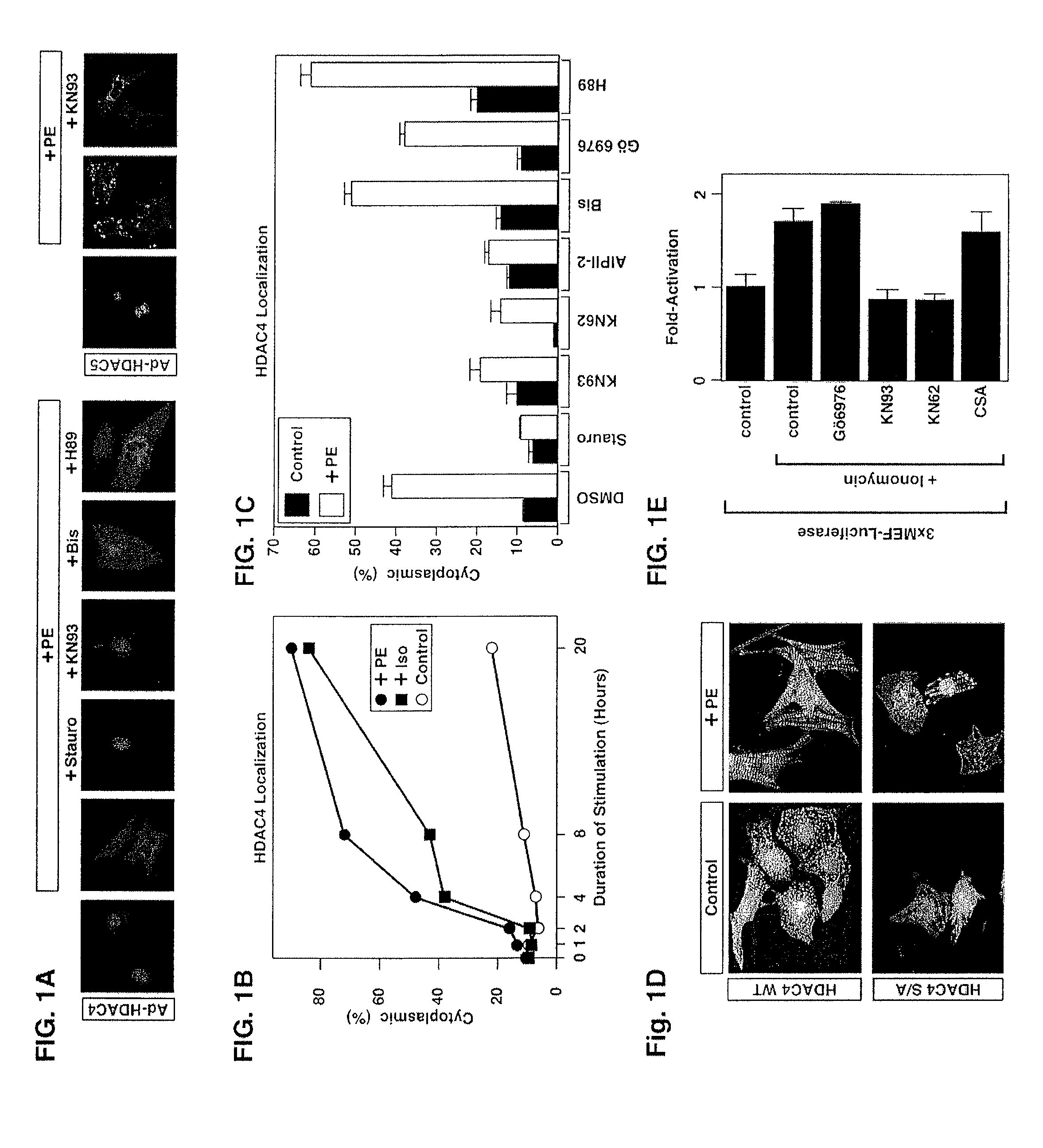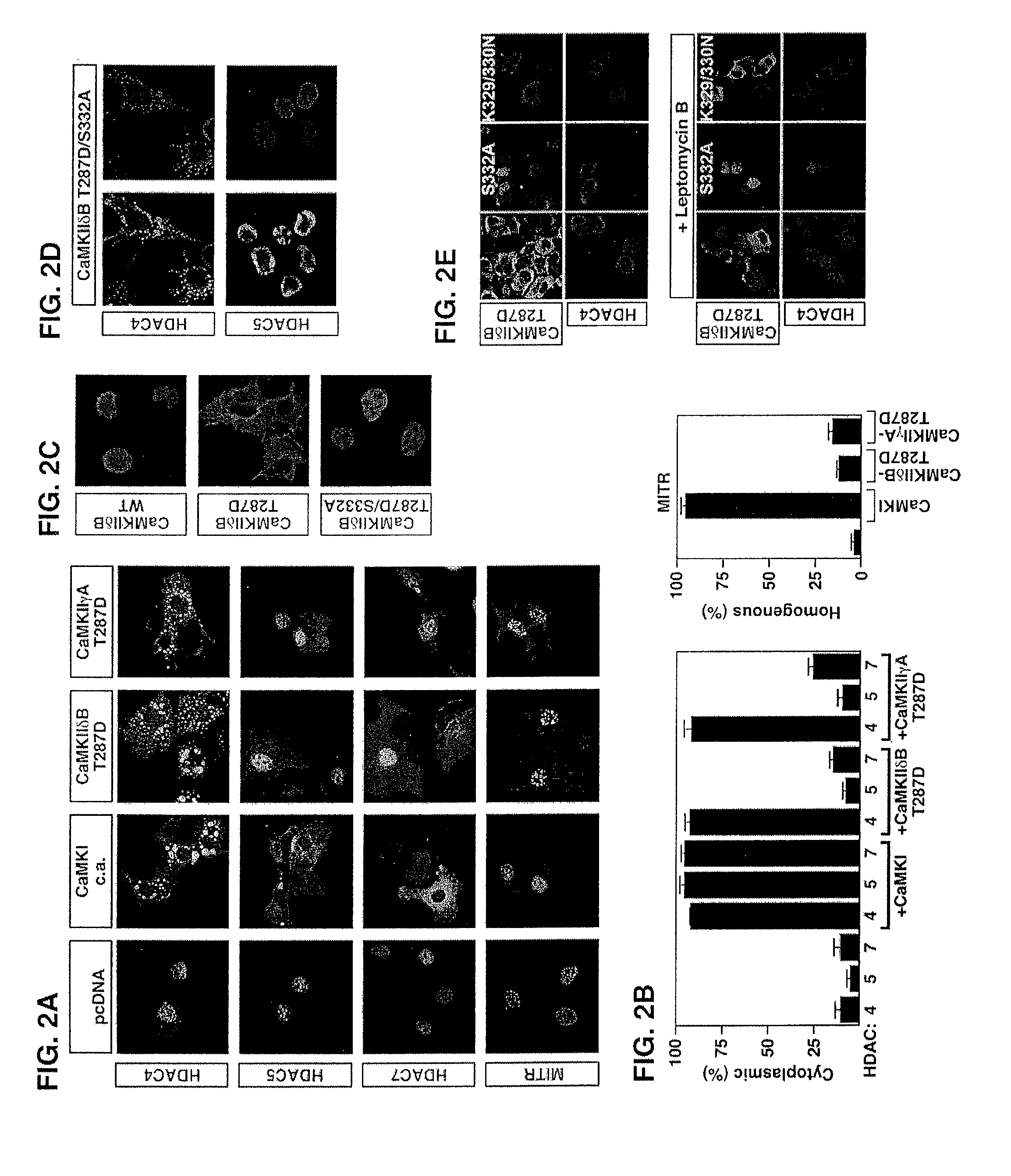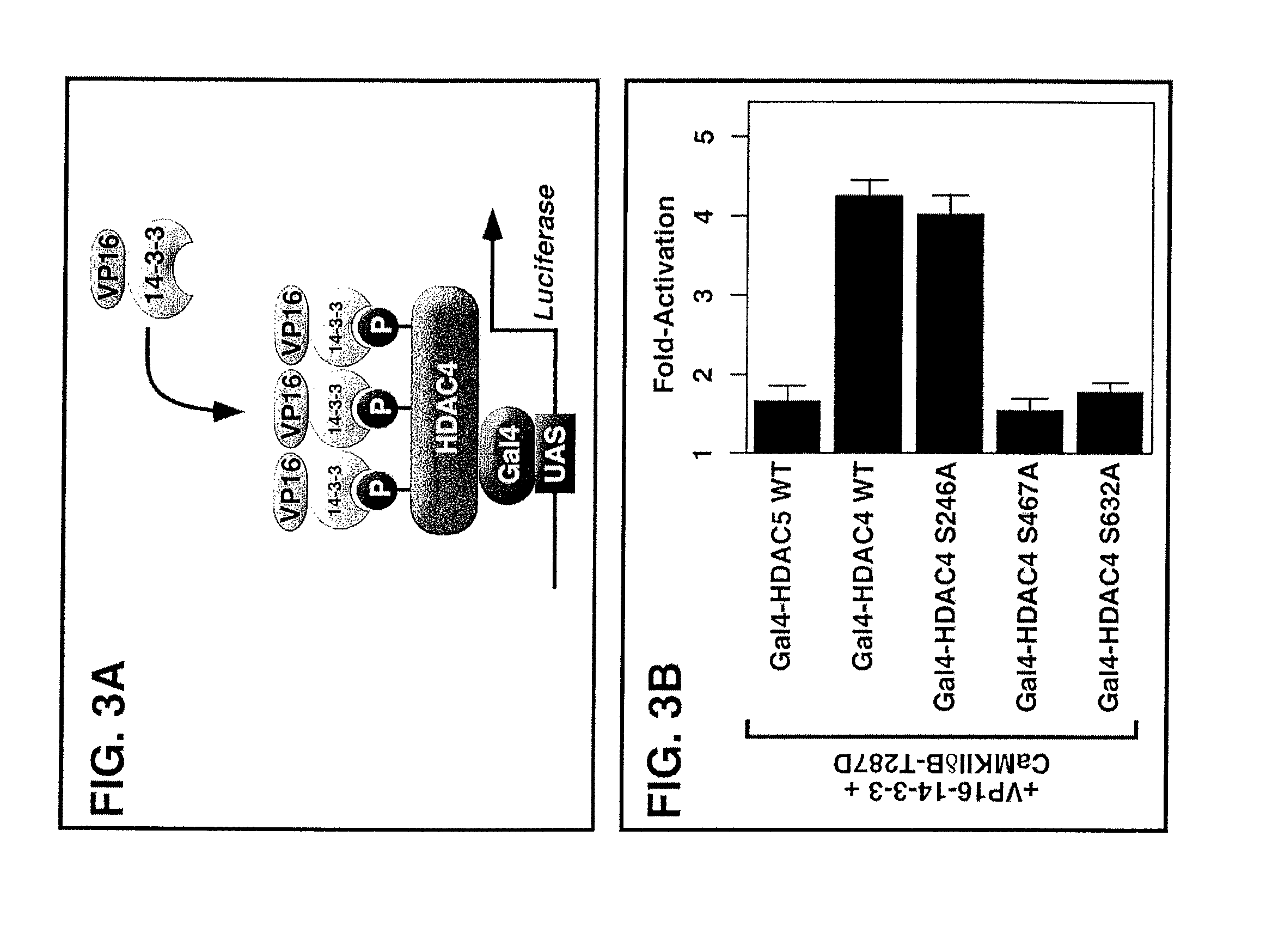Methods of treatment and uses for CaMKII and its interaction with HDACs and calpain
a camkii and calpain technology, applied in the field of cardiology, physiology and molecular biology, can solve the problems of atherosclerosis and stroke, damage to the delicate lining of the blood vessels, and damage to the arteries, heart and kidneys
- Summary
- Abstract
- Description
- Claims
- Application Information
AI Technical Summary
Benefits of technology
Problems solved by technology
Method used
Image
Examples
example 1
A. Example 1
[0134]1. Materials and Methods
[0135]Chemical reagents and plasmids. Phenylephrine (PE) and isoprenaline (Iso) were purchased from Sigma Chemical (St. Louis, Mo.). KN93, KN62, autoctamide-2 related inhibitory peptide II (AIPII-2), staurosporine, bisindolylmaleimide I (Bis), Gö6976 and cyclosporin A (CSA) were obtained from Calbiochem (La Jolla, Calif.), leptomycin B was purchased from LC Laboratories (Woburn, Mass.).
[0136]Epitope-tagged derivates of the CaMKIIδ splicing variants A, B and C, CaMKIIγA, CaMKIIαA and CaMKIIβ′e, containing amino-terminal Myc tags were generated using the pcDNA3 expression vector (Invitrogen). HDAC7 was fused to an amino-terminal FLAG tag (pcDNA3), and HDAC4 to a carboxy-terminal GFP tag (EGFPN1; Clontech). Epitope-tagged derivatives of constitutively active CaMKI (created by a deletion of the autoinhibitory domain at the C-terminus), HDAC4, HDAC5 and MITR, containing HA, FLAG, Myc or GFP tags were described previously 6, 21, 25, 26, 54. Point ...
example 2
B. Example 2
[0164]1. Materials and Methods
[0165]COS Transfection, plating, culture maintenance and test compound dosing procedures. COS cells are trypsinized cell density counted with a hemocytometer. COS cells are then diluted in a laminar flow hood to 40,000 cells / mL in HyQ DME / High Modified culture media (Fisher) supplemented with 10% FBS and 1:100 P / S / G. A total of 0.768 million cells are required per 384-well plate, however, it is important to include an extra 1.536 million cells in the calculation of cells needed for the screen in order to allow for the cell suspension that is lost during the priming the Bio-Tek®μFill™. The total amount of DNA needed is calculated (5 μg of DNA per million cells). The total amount of DNA consists of half HDAC4-GFP and half CAMKIIδB T287D. The amount of FuGENE 6 needed is then calculated (6 μL FuGENE 6 per μg DNA). The FuGENE 6 is diluted in an amount of DMEM equal to 33.3× the amount of FuGENE 6 used and incubated for 5 min at room temp. The Fu...
PUM
| Property | Measurement | Unit |
|---|---|---|
| mean pressure | aaaaa | aaaaa |
| mean pressure | aaaaa | aaaaa |
| systolic pressures | aaaaa | aaaaa |
Abstract
Description
Claims
Application Information
 Login to View More
Login to View More - R&D
- Intellectual Property
- Life Sciences
- Materials
- Tech Scout
- Unparalleled Data Quality
- Higher Quality Content
- 60% Fewer Hallucinations
Browse by: Latest US Patents, China's latest patents, Technical Efficacy Thesaurus, Application Domain, Technology Topic, Popular Technical Reports.
© 2025 PatSnap. All rights reserved.Legal|Privacy policy|Modern Slavery Act Transparency Statement|Sitemap|About US| Contact US: help@patsnap.com



